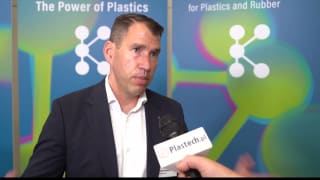
Kistler has combined a linear direct-drive module from LinMot with piezoelectric measurement technology in the NCFQ 2166A joining system, addressing assembly tasks that demand both high dynamics and precise force control. The turnkey system targets operations requiring short cycles and strict process capability, including medical device assembly, electronics testing, semiconductor-related tasks and selected automotive operations. The magnet-based linear module reaches accelerations up to 50 m/s² and speeds up to 5 m/s, while a magnetic spring supports weight compensation in vertical orientations. Kistler complements the mechanics with piezoelectric force and acceleration sensors, the ICAM-B industrial charge amplifier and the maXYmos NC process monitoring platform to provide data transparency, process reliability and closed-loop control. The solution is positioned for highly dynamic, low-force applications up to 500 N, such as auto-injectors and insulin pens, where consistent joining quality at very short cycle times is critical.
System architecture and performance
The NCFQ concept merges the responsiveness of a linear motor with the resolution and stability of piezoelectric sensing. In addition to force measurement, the module can be configured with an acceleration sensor to support advanced signal conditioning in dynamic processes. In medical device assembly, for example, the system is used to insert an insulin cartridge into a plastic auto-injector housing and complete the joining step within cycle times of around 500 milliseconds. In such tasks, a narrow process window must be maintained. If the joining force is too low, components may not seat properly; if too high, the cartridge can be damaged and leak.
According to Kistler, the platform also addresses electronic assembly and test tasks, including relay actuation checks or haptic evaluations that rely on low-force, high-speed motion with precise force signatures. Process monitoring via maXYmos NC provides real-time evaluation against defined envelopes, enabling traceability and rapid detection of deviations.
Peter Balzer, Product Manager for NC joining systems at Kistler, commented on the design intent: "The demands for highly accurate force measurement combined with high dynamics are constantly increasing. Until now, users had to decide whether to focus on precision and exact process monitoring or on speed. In areas where consistently high quality is crucial, choosing a slower system has traditionally been the only viable option. With our new NCFQ high-speed joining system, there is no need to compromise."

The new NCFQ high-speed joining system from Kistler combines a LinMot linear module with precise piezoelectric measurement technology. It is ideal for demanding joining applications with high dynamics – especially in the medical, electronics, semiconducto
Acceleration compensation and process control
In high-dynamic cycles, measured force signals include both product-related joining forces and inertial components caused by the actuator motion. As Balzer explains, evaluating force alone can be misleading in these conditions: "Due to the high dynamics of the linear module, the acceleration forces are always measured, too. However, they are irrelevant for product quality and make it difficult to evaluate the process based solely on force data." To address this, Kistler offers an advanced configuration that integrates a highly sensitive 8203A piezoelectric acceleration sensor. The system automatically filters out acceleration-induced components so that only joining forces are displayed for analysis and control. This simplifies process setup, envelope definition and quality evaluation, particularly in applications with short strokes, high speeds and low forces.

High-speed joining meets precise force measurement: Kistler supplements the proven LinMot linear module with piezoelectric force measurement technology and automatic acceleration compensation.
Applications, options and support
Beyond integration in automated lines, the system is used in process development and validation. A pharmaceutical manufacturer employs it as a stand-alone workstation for manual assembly, leveraging identical measurement and monitoring functions to establish process limits before scaling to automation. Depending on requirements, the platform can be outfitted with alternative sensors and joining modules with different strokes and force ranges.
For application engineering, Kistler’s Assembly Competence Center supports planning, cost transparency and validation. Balzer notes: "The ACC is our central point of contact for determining precise measurement values and process parameters in the production environment. Together with users, we tailor our systems to the specific application so that they meet all requirements for precision, speed, and tool compatibility."



